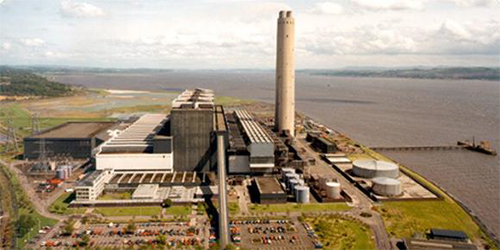BIOMASS-FUELED POWER PLANTS
A biomass-fueled power plant produces electricity and heat by burning biomass in a boiler. The most common types of boilers are hot water boilers and steam boilers. Wood chips, residues and other types of biomass are used in the boilers, in the same way as coal, natural gas and oil. Fuel is stored in a bunker for further transport to the boiler. In the boiler, water is heated to high temperature under pressure. Steam from the boiler powers the turbine, which is connected to the generator. Steam that has passed through the turbine, heats district heating water, which is distributed through the district heating network's piping. Co-firing biomass with coal (replacing a portion of coal with biomass) is an effective method of using biomass for energy purposes and to reduce CO2 emissions. Coal plants can be made suitable to replace part of the coal by biomass or even to convert fully to biomass – turning a coal plant into a 100% renewable energy plant. Forest products – Woody biomass from multi-functional forests constitutes the majority of today's biomass. Pellets and briquettes are manufactured by compressing by-products from the forestry industry, such as sawdust, bark or small diameter wood. They are easy to transport and therefore suitable for export. Waste, by-products and residues – Residues include manure, sewage, sludge and other degradable waste. Liquid biomass waste, such as manure, household waste and sewage plant residues, can be digested to biogas. CO2 emissions from biomass are part of a short cycle and do not lead to a net increase of CO2 in the atmosphere: When forests grow, they absorb CO2. When biomass is harvested from forests and used for energy the CO2 is released again. When the forest regrows it reabsorbs the CO2 again, see illustration below. Provided the forest is managed sustainably the process of harvesting and regrowth can be continued indefinitely, making biomass a renewable source of energy.


